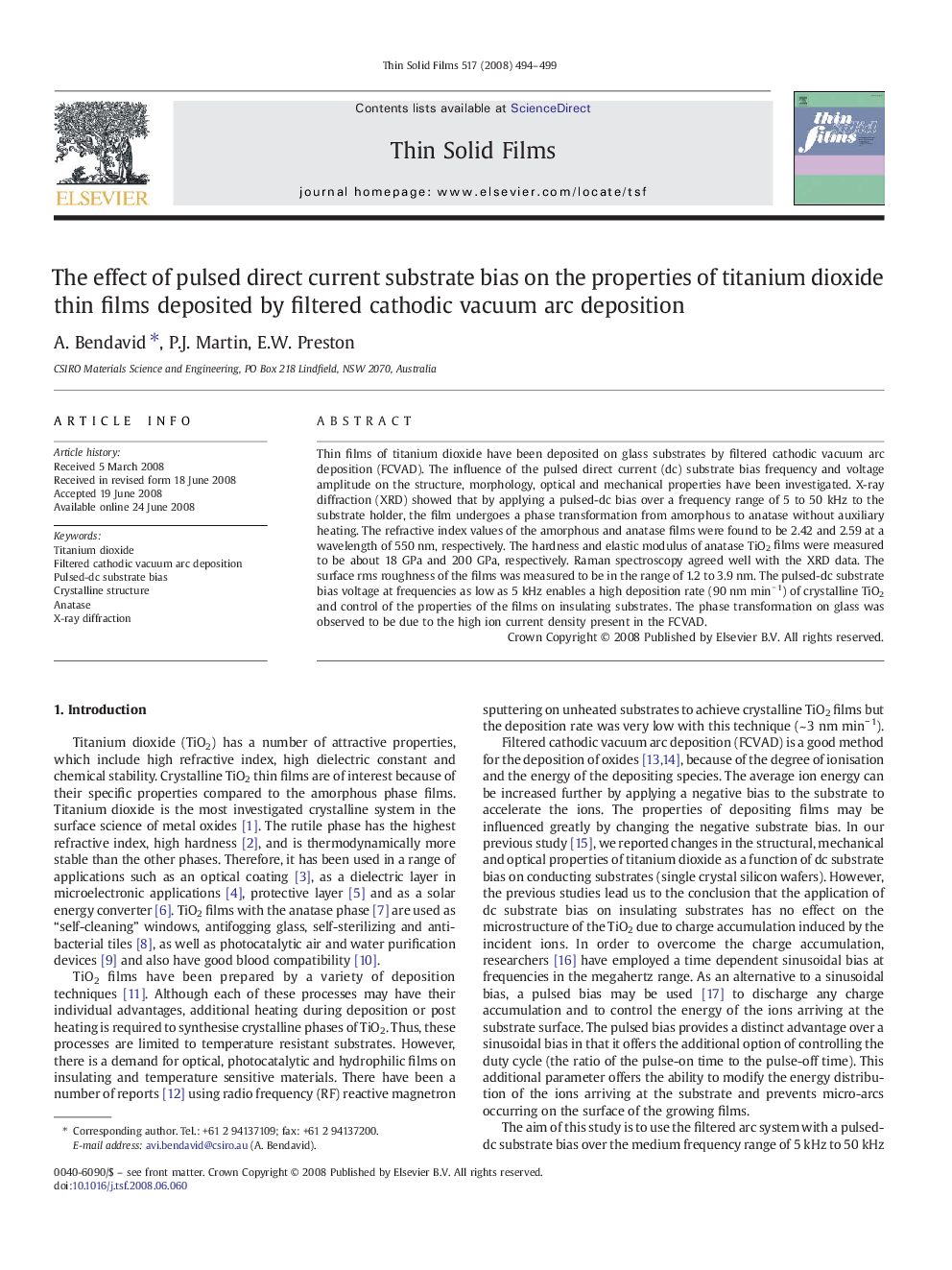| کد مقاله | کد نشریه | سال انتشار | مقاله انگلیسی | نسخه تمام متن |
|---|---|---|---|---|
| 1670103 | 1008896 | 2008 | 6 صفحه PDF | دانلود رایگان |

Thin films of titanium dioxide have been deposited on glass substrates by filtered cathodic vacuum arc deposition (FCVAD). The influence of the pulsed direct current (dc) substrate bias frequency and voltage amplitude on the structure, morphology, optical and mechanical properties have been investigated. X-ray diffraction (XRD) showed that by applying a pulsed-dc bias over a frequency range of 5 to 50 kHz to the substrate holder, the film undergoes a phase transformation from amorphous to anatase without auxiliary heating. The refractive index values of the amorphous and anatase films were found to be 2.42 and 2.59 at a wavelength of 550 nm, respectively. The hardness and elastic modulus of anatase TiO2 films were measured to be about 18 GPa and 200 GPa, respectively. Raman spectroscopy agreed well with the XRD data. The surface rms roughness of the films was measured to be in the range of 1.2 to 3.9 nm. The pulsed-dc substrate bias voltage at frequencies as low as 5 kHz enables a high deposition rate (90 nm min− 1) of crystalline TiO2 and control of the properties of the films on insulating substrates. The phase transformation on glass was observed to be due to the high ion current density present in the FCVAD.
Journal: Thin Solid Films - Volume 517, Issue 2, 28 November 2008, Pages 494–499